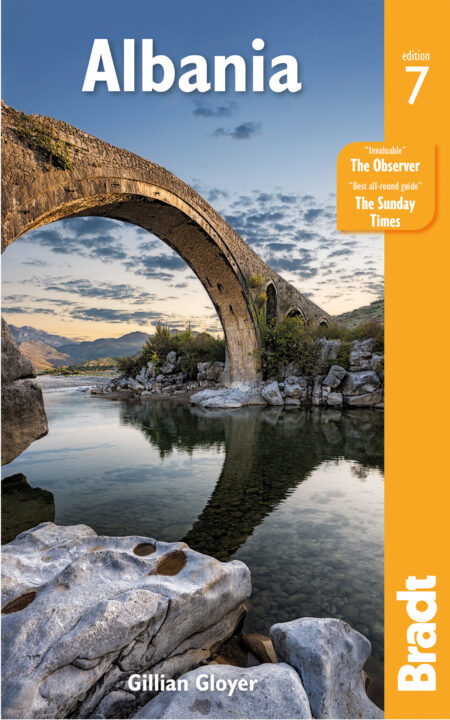Home to a number of UNESCO World Heritage towns, archaeological sites and fascinating museums, Albania‘s rich history is evident up and down the country. Here’s what not to miss during your visit.
Durrësi’s Roman amphitheatre
The huge Roman amphitheatre, which is one of Durrësi’s main attractions, was built in the early 2nd century AD. The largest in the Balkans, it is elliptical in shape, about 130m at its longest point, with the arena itself measuring about 60m by 40m across. On the terraced seats there would have been room for about 15,000 spectators, about a third of the capacity of the Colosseum in Rome.
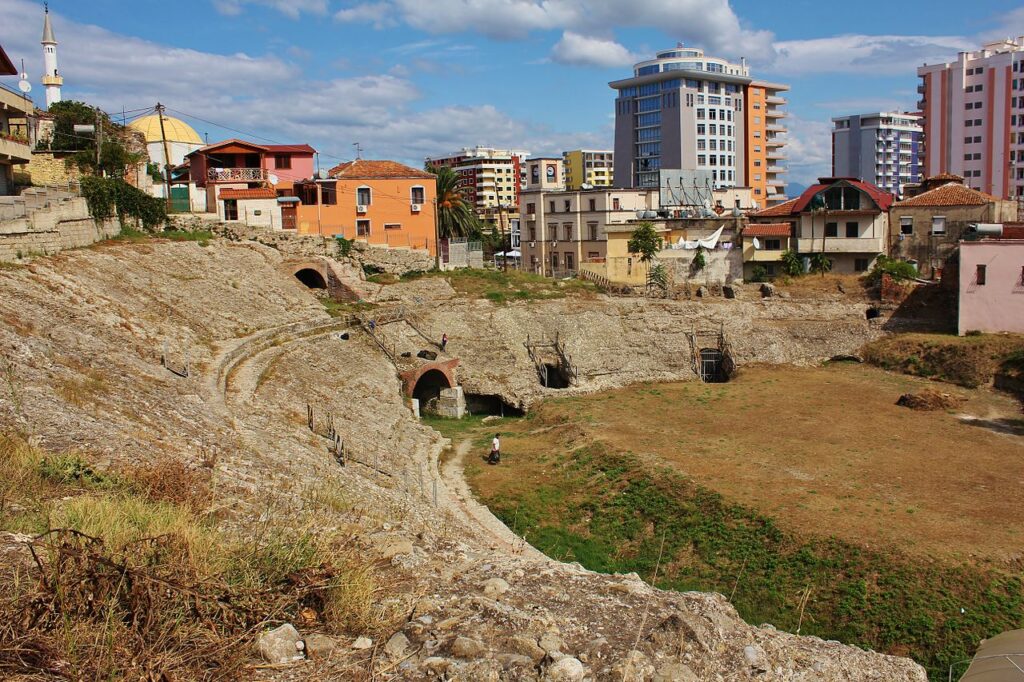
Today, visitors can go down into the vaults below the rows of seats and see how the amphitheatre was constructed. Behind the gallery, you can see the pens where the wild animals were kept; leading out from it is the tunnel through which the gladiators entered the arena.
Kruja Castle
Kruja Castle stands on a crag overlooking the plain below the town of Kruja, with views on a clear day out to the Adriatic. Within the castle walls are two very different museums, a historic Bektashi teqe (a holy place or worship home to the tombs of past babas) and several other places of interest; you could easily spend several hours visiting these and wandering around the cobbled lanes in the residential area.
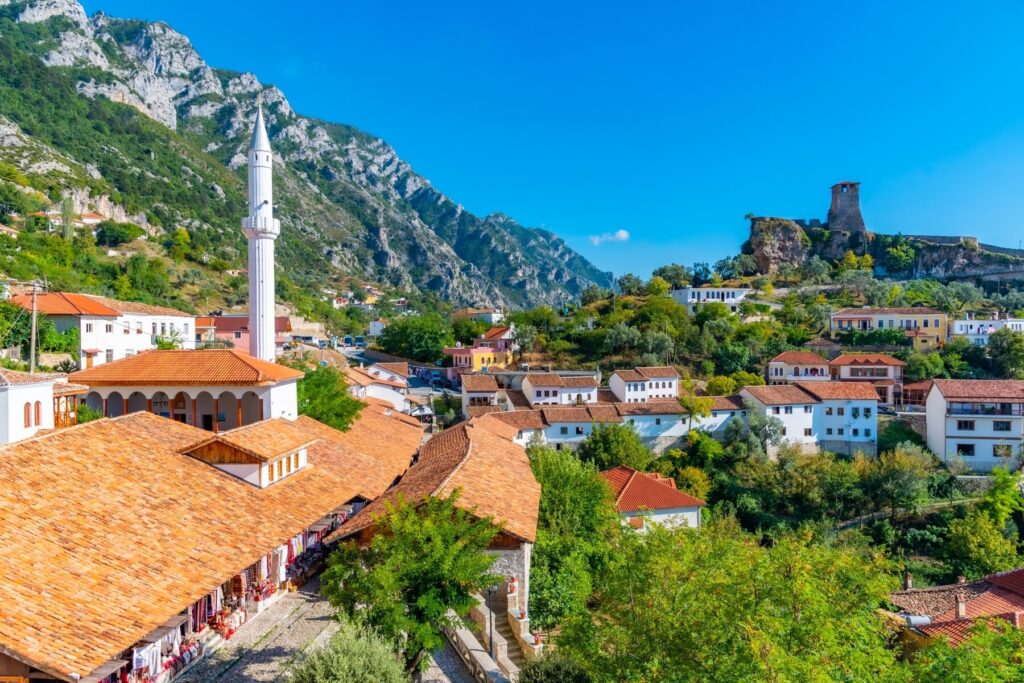
When walking around the citadel, you’ll find a hamam (a bathhouse) which is five centuries old as well as the tower that was originally a lookout and signalling post and the remains of a medieval church with a couple of surviving fragments of fresco. Today, ordinary families still live within Kruja Castle, although in less luxurious houses than earlier residents.
Berati
Berati is one of the oldest cities in the country and and one of the most attractive; the view of its white houses climbing up the hillside to the citadel is one of the best-known images of Albania. The city is home to eight medieval churches, two of the oldest mosques in Albania and an Ethnographic Museum, situated within a beautiful 18th-century traditional house. A visit to the museum is an excellent opportunity to learn about Berati architecture and find out more about people’s way of life until only a few decades ago. The citadel was first fortified in the 4th century BC by the Illyrian Parthini.
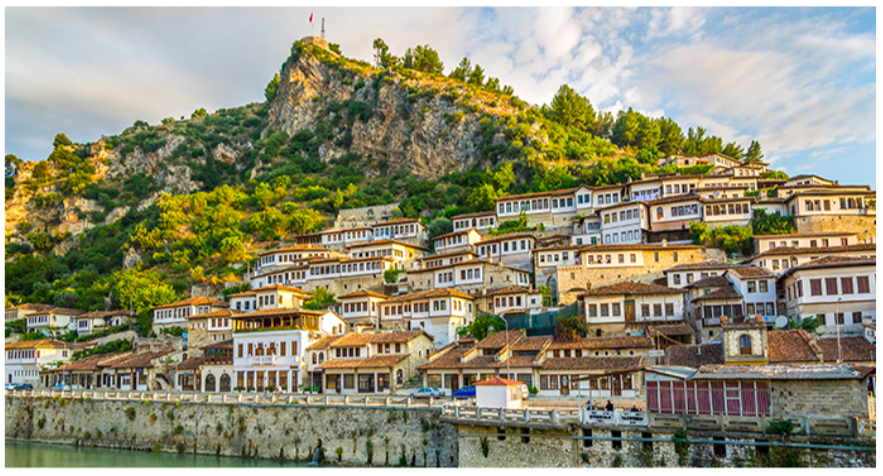
Today, within Berati Castle’s walls there are several churches, including the Church of the Dormition of St Mary, home to the Onufri Museum where over 100 beautiful icons are displayed. Visitors to the castle can also take a walk around the perimeter walls to a viewpoint and witness great views over the city. On the opposite hill, on the left bank of the Osumi River, the remains of the massive walls known as Gorica Castle can be seen. Berati won recognition as a UNESCO World Heritage Site in July 2008.
Rozafa Castle
Rozafa Castle in Shkodra stands above the confluence of its three rivers, the Drini, the Kiri and the Buna, and thus controls all but the northern approach to the city. It is an excellent place for a castle and has been fortified since Illyrian times, when the Ardiaean queen Teuta launched her attacks on the Romans from it. Traces of the Illyrian walls, constructed of large stones with no mortar, can still be seen at the entrance.
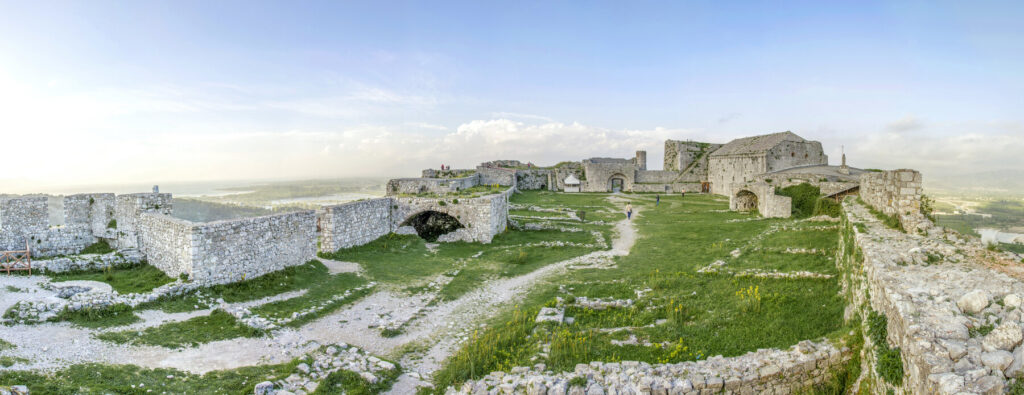
The third section of the castle was the real fortress, with underground stairways and tunnels connecting to different parts of the citadel. Some of the entrances to these secret passageways can still be seen, although the tunnels themselves are not open. The three-storey Venetian building at the end of the third courtyard now houses the museum. This covers not only the history of the castle but also of the surrounding area. From the castle walls, you can see the Leaden Mosque on the floodplain below, an 18th-century building in classical Ottoman style.
Gjirokastra
The town of Gjirokastra became a UNESCO World Heritage Site in July 2005, allowing it to preserve its architectural heritage. It is most famous for its castle, which perches above the city. The castle is no longer inhabited, unlike the citadels of Kruja and Berati, but it was used as a garrison and a prison until very recently. It is now home to the Museum of Armaments and its collection of weapons as well as the Museum of Gjirokastra which gives an extensive overview of the city from its prehistory to the very recent past.
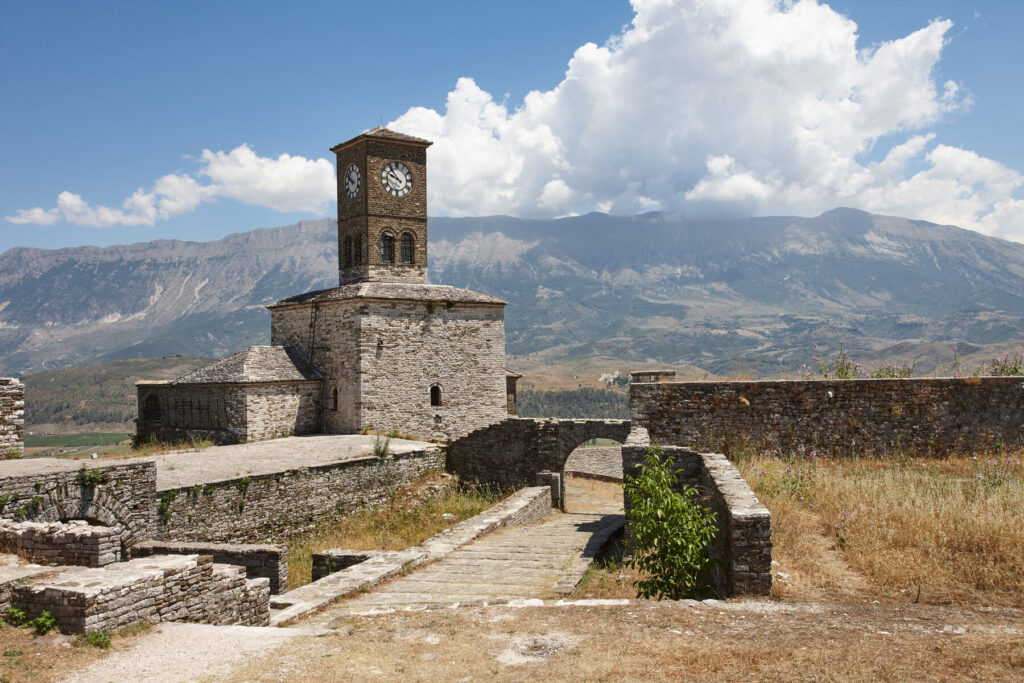
Another distinct draw for visitors to Gjirokastra is the city’s beautiful and unique 19th-century houses. No traditional house is quite like another, although they have been classified according to certain design characteristics such as the number of wings that they have. The Kadare house has now been rebuilt and opened to the public. The ground floor and basement have been painstakingly reconstructed and you can see the rainwater cistern, the pantry and the beautiful external staircase.
Butrint
The ancient city of Butrint, one of UNESCO’s World Heritage Sites, is far and away the most-visited archaeological site in Albania, with visible remains spanning two- and-a-half millennia – from the first settlers in the late 6th or early 5th century BC to Ali Pasha Tepelena at the beginning of the 19th century AD. There is an array of fascinating sites to explore and the city welcomes visitors with informative and well-presented panels so that you can make the most of your trip. Depending on which sites you choose to visit, you may be travelling by foot in the city itself or by boat along Lake Butrint.
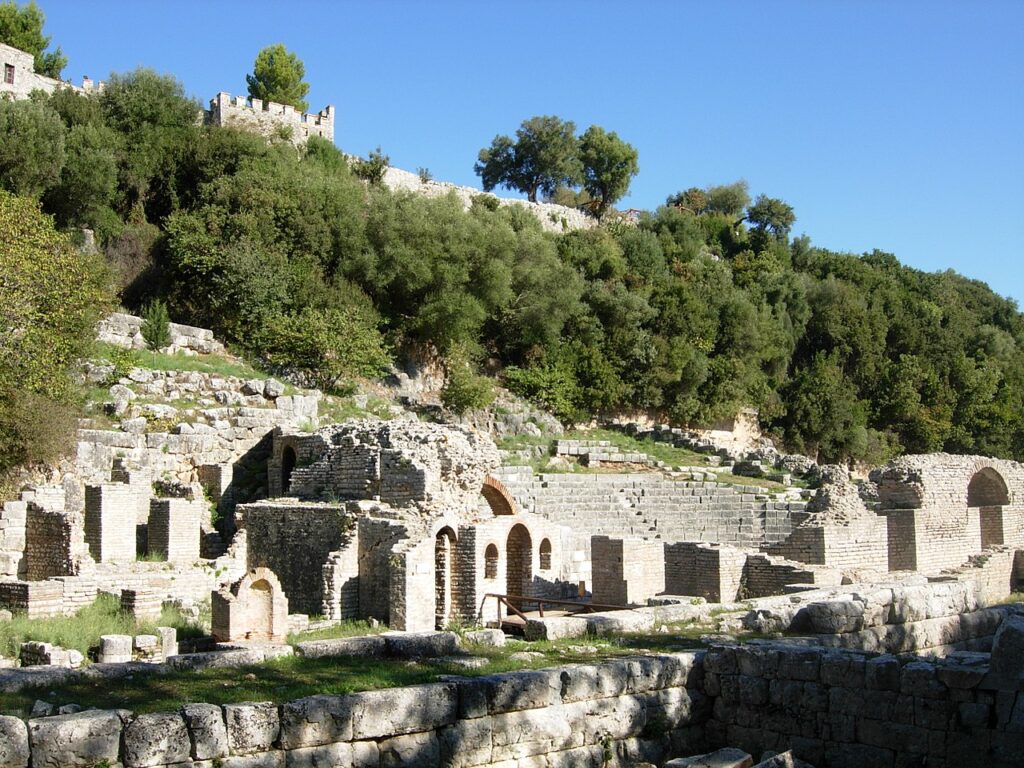
You could easily spend an afternoon visiting the monumental centre, which used to be a sanctuary to the god of medicine, or exploring the remains of the defensive wall which was built around the lower city. Likewise, the Butrint theatre, where plays are staged notably during an international drama festival that is held every summer, is well worth a visit. There are also important Christian structures such as the Great Basilica and the associated, though not adjacent, Baptistery, which was the largest baptistery east of Rome.
Apollonia
The city of Apollonia was the second Greek settlement on the Illyrian mainland, after Epidamnos (now Durrësi) and it was founded, according to tradition, in 588 BC and named for the god Apollo. Apollonia is a complex, multi-layered site and it is estimated that only about 10% of the city has been excavated to date. Good information panels, in Albanian and English, have now been installed around the site, with computer-generated images of how archaeologists believe the buildings would have looked at the time they were being used.
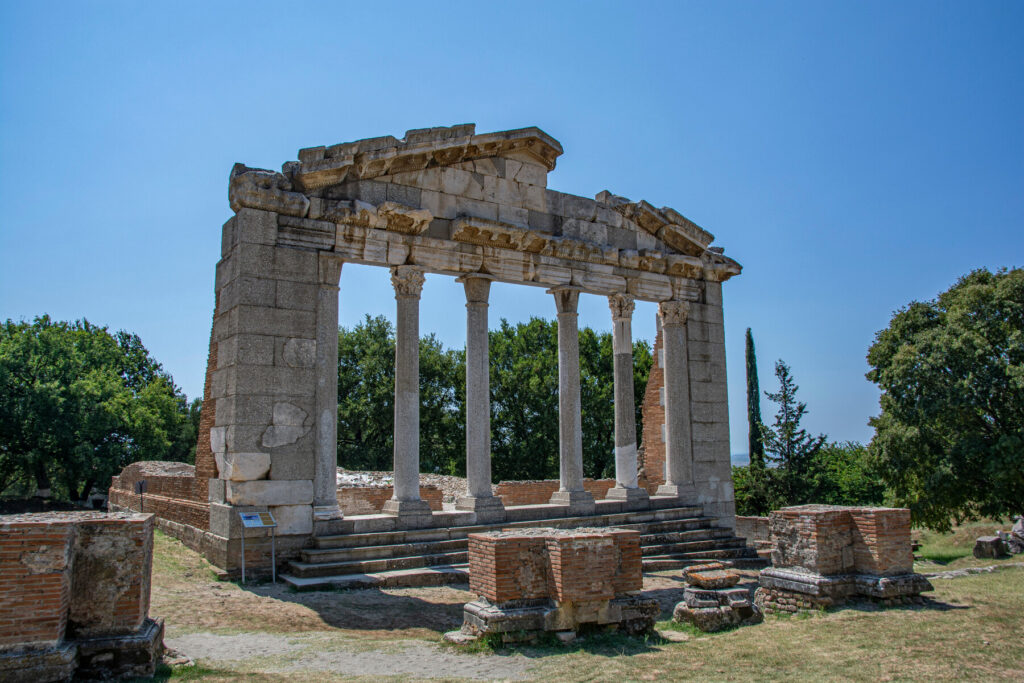
The building that immediately draws the visitor’s eye is the Bouleuterion, where the city council met. It was built in the late 2nd century AD by the brother of a military commander who had died on Rome’s eastern front. Behind the Bouleuterion, and built around the same time, is a little theatre known as the Odeon. This was not the city’s public theatre, but a venue for cultural and musical events for the elite, seating only about 300 people. The city’s public theatre was built in the 3rd century BC, on a magnificent site on the western edge of the city.
More information
For more information, check out Gillian Gloyer’s guide:
